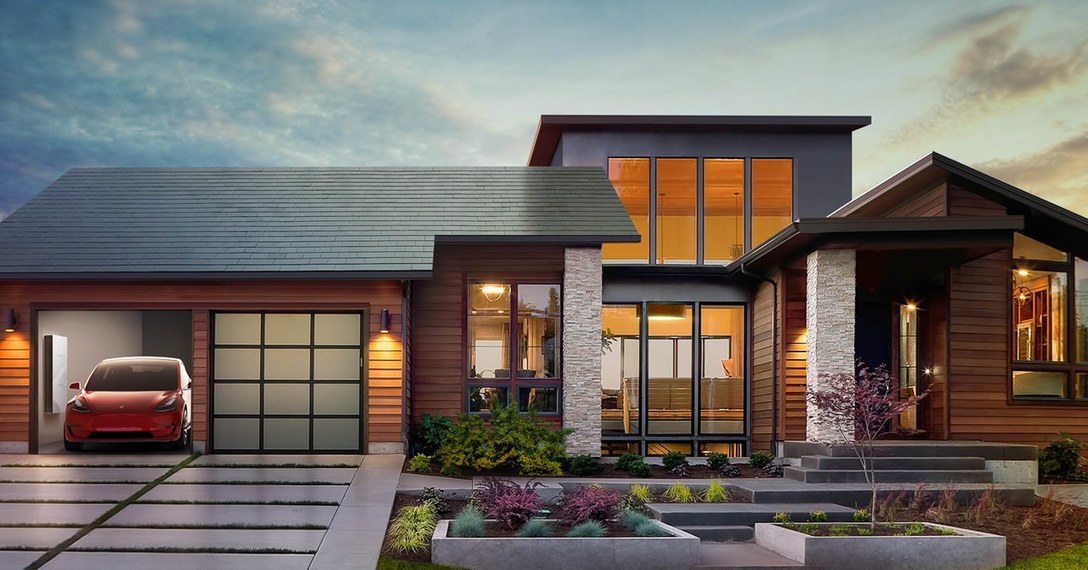Since Tesla unveiled its Solar Glass Roof in 2016, its home energy business has stumbled. CEO Elon Musk thinks a new version of the house-topper could turn that around.COURTESY OF TESLA
Elon Musk on Friday afternoon revealed details of the latest version of Tesla’s Solar Glass Roof, announcing that installations have begun and should ramp up in the coming weeks. This third iteration of the electricity-generating house-topper will be cheaper, easier, and faster to install than its predecessors, Musk said in a public Q&A session. That makes it a viable candidate for the kind of scale the Tesla CEO tends to target, reaching thousands of homes a week in a few months’ time. “It’ll grow like kelp on steroids,” he said. And with enough growth, it could revive Tesla’s stumbling attempt to be not just a carmaker, but an energy company.
Rather than installing solar panels on an existing roof (a service Tesla also offers), this product is the roof. It’s made of glass tiles that can turn photons into electricity. From the ground, the tiles are meant to be indistinguishable from opaque slate, assuaging concerns about a trade-off between helping the environment and hurting one’s eyes. Musk showed off the first version of the product in 2016, and never disclosed the second version until Thursday. The latest version comes with a 25-year warranty and a promise that the glass can withstand 110-mph winds and chunks of hail nearly 2 inches in diameter.
For years, Musk has said that the solar roof and Powerwall (basically a big battery that allows owners to store energy produced by solar power, instead of sending it to the grid) are important to the company’s quest to accelerate the adoption of clean energy. But in the three years since it started taking reservations for the solar roof, Tesla has struggled with the product, delaying its launch and winning relatively few installations. The second version, Musk said Friday, was so expensive to produce and install that Tesla was “basically trying not to lose money.” The edges, especially where the tiles met gutters, were “very artisanal” and often completed at the work site, making for a complicated and time-consuming installation. In the second quarter of this year, Tesla installed just 29 megawatts of solar power—far from its quarterly high of 200.
Version 3.0, he said, uses bigger tiles and different materials (no more detail there), and cuts the number of parts and subassemblies by more than half. Work slowed while Tesla focused its resources on producing its Model 3 sedan, but now that production’s running smoothly—and profitably—it has swung its attention back to the roof.
Sourced through Scoop.it from: www.wired.com



Leave A Comment